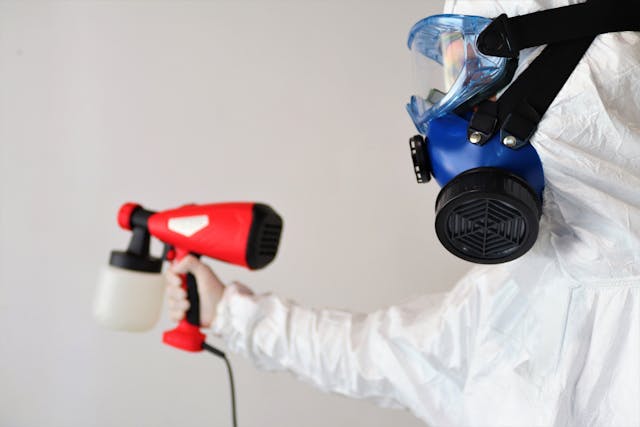
Mold thrives in moist areas such as ceilings, roofs, windows, insulation, plumbing, or air ducts. This fungus can seep into your home through leaks, vents, and open entries. Mold can also grow on carpets and furniture in the aftermath of flooding.
The World Health Organization estimates that as many as 50 percent of indoor environments have at least some trace of mold. Coastal or humid regions are especially vulnerable, and summer is the most prevalent time for mold growth.
While mold is harmless outdoors, it can cause structural weakness in buildings and pose a health risk to everyone inside. Therefore, early detection is crucial to prevent it from spreading. Here are five signs of mold to watch out for—plus helpful prevention and remediation techniques to banish this unwelcome guest from your property.
Table of Contents
The most obvious sign of mold is physical growth. Mold can occur in many colors, including black, white, green, blue, or pink. This fungus will often have a slimy or fuzzy texture, and it’s easiest to spot in the following household areas:
● Bathrooms: Around tiles, grout, fixtures, or caulking
● Kitchens: Under sinks or in appliances (dishwashers, refrigerators, etc.)
● Basements and Attics: On walls, ceilings, or insulation
● HVAC Systems: In vents, filters, air ducts, furnaces, or evaporator coils
An unusual earthy, damp, or musty scent can also indicate mold. Pay attention to where the smell comes from, as mold often lurks in hard-to-see places like behind walls, beneath carpets, or hidden crevices. Once you locate the odor’s source, clean it thoroughly and monitor that area for regrowth.
If you've had recent water damage, look for potential growth. Leaky roofs, plumbing issues, or floods can create the ideal moist environment for mold spores to thrive. Diligently check for warped materials, discoloration, peeling paint, or water stains on your property’s walls, ceilings, and floors.
Mold can cause respiratory health conditions, especially in those with allergies or asthma. If someone in your household chronically sneezes, coughs, or has trouble breathing, this could be a result of mold exposure. Notice if these symptoms worsen in specific locations, which may indicate where the mold spores are concentrated.
If you see excessive condensation on plumbing fixtures or window panes, your home might be too damp. Interior humidity above 60 percent can accelerate mold growth. Ensure the space is well-ventilated, check for any HVAC obstructions, and use a hygrometer (you can find these at home improvement stores) to measure the humidity.
Successful mold remediation requires both moisture control and routine maintenance. Once you locate this problem at its source, here are some actionable ways to remediate the mold issue and prevent more troublesome growth.
● Identify the Source: Find where the moisture is coming from, then call a technician to resolve this issue so the mold cannot return after remediation.
● Contain the Spread: Use a plastic sheet and tape to seal off this moldy area from the rest of your house to ensure the spores won’t spread anywhere else.
● Clean and Remove: Remove the mold from its contained area with cleaning products (like bleach or hydrogen peroxide) and safety gear. If the infestation has spread to larger areas, hire a professional mold remediation service to eliminate it.
● Avoid Future Growth: Dispose of any contaminated materials (like insulation, drywall, or carpeting) in sealed plastic bags so the spores cannot re-grow.
● Inspect the Area: After removing the mold, conduct a final inspection to ensure all traces are gone and the moisture source is effectively managed.
● Control Moisture: Fix any water damage, stains, or leaks immediately. Ensure optimal ventilation in rooms like the bathroom and kitchen. Use a dehumidifier to air out damp areas and maintain indoor humidity levels below 60 percent.
● Clean Regularly: Clean high-moisture areas at least once a week. Use mold-resistant products, and make sure the house is well-ventilated while cleaning.
● Maintain Ventilation: Install exhaust fans in the kitchen and all bathrooms. Open your windows to increase air circulation and prevent moisture build-up.
● Look for Red Flags: Routinely check for indications of water damage or potential mold growth. Consider hiring a professional technician to inspect the entire house more thoroughly, especially those hard-to-see areas.
Early Mold Detection Makes All the Difference
The earlier you can spot mold growth, the easier it will be to eliminate the issue and restore a healthy indoor environment. Watch out for these telltale signs and implement remediation techniques to oust this pesky fungus from your home—both now and in the future.
